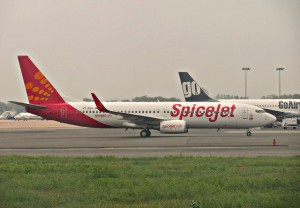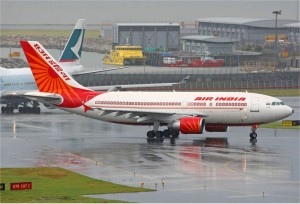The Nanfang is pleased to present Fuwuyuan!, a bar and restaurant review column which will appear periodically.
A crêperie suggests sweet desserts. Not the case at Emma’s Crêpes. In fact, I was delightfully surprised that there was a number of savoury crêpes options, as well as salads and pastas if you’re just not that into pancakes. I say “delightfully” because I’ve not come across an alternative, let alone something tasty, to distract my sweet tooth.

Emma’s Crepes
Tucked away down the side streets of Guang Mao Times Square, outside Guangdong University of Foreign Studies (GDUFS), Emma’s has become a popular haunt for staff and students.
The taste test
I couldn’t possibly have eaten two different crêpes in one serving so I had to come back twice to truly experience the menu. For my first helping, I chose a classic: a banana and Nutella crêpes. The flavour immediately makes your mouth water as you chew away. It’s incredibly addictive, and the portion is quite large, given the 18RMB price tag (however, I paid a tad more for an extra smearing of Nutella and vanilla ice cream on top – delicious).

Banana Nutella Crepe
On my second session, I ordered a Hawaienne, which includes egg (cooked to your liking – I went for sunny side-up), Emmental, pineapple, chicken, pepper and herbs. It arrived beautifully presented in a square shape, drawing attention to the filling and decoration. Compared with the Nutella crêpes, the Hawaienne was quite filling, and should accommodate larger appetites without the need of purchasing extras or side orders.

The Hawaiiene
On each serving, my drink of choice was warm, and frothy hot milk with honey. Gently flavoured, and not too sweet, it was an excellent pairing with the crêpes. Unlike the large portions of the crêpes however, the drinks require a little fine tuning – perhaps the option of a larger cup size.
The service and staff
Language is no barrier here. Menus are available in Chinese and English, and the friendly warmth of the Chinese fuwuyuan (and owner), will charm you with her gorgeous English speaking French accent (she lived and studied in Paris for six years she tells me).
Her partner, the crêpe-making maestro, comes direct from France, and orchestrates the cooking behind the scenes. When he’s not busy in the kitchen, he’s wandering the café, smiling, and getting to know his customers.
Service is very quick and efficient from order to service, as fresh, warm crêpes ensure a quick turnaround time. Customers however are not rushed but rather encouraged to stay, relax, and enjoy all the flavours the food has to offer.
The atmosphere
While you’re not going to get much from the interior, or from the very firm seating, there’s plenty of the French experience to enjoy at Emma’s. With French music playing in the background, and numerous photographs of France plastered on the walls, if you close your eyes for a moment, you too may get the feeling you’re sitting in a Parisian café.
Final thoughts
The crêperie is an intimate setting where singles, couples, friends or small groups can go. Preferably no more than groups of eight, as each crêpe is cooked to order, and the service may become sluggish. Regardless, Emma’s is worth coming back for again, and again, and again.
Overall rating
4 out of 5 forks.
Price
First sitting
Banana and Nutella crêpe: 18 yuan
Hot milk with honey: 10 yuan
Extras
- One scoop of Vanilla ice-cream: 5 yuan
- Additional Nutella: 5 yuan
Total price: 38 yuan
Second sitting
Hawaienne crêpe: 30 yuan
Hot milk with honey: 10 yuan
Total price: 40 yuan
Address
Guangmao Times Square A7: the east gate of Guangdong University of Foreign Studies, Baiyun Avenue, Baiyun district, Guangzhou.
广州白云大道广东外语外贸大学正门北侧(广贸时代广场档)
Telephone number
020-3620-6781
Email
[email protected]
Extras
Free wi-fi is available
You can get more information on Emma’s Crepes on The Nanfang restaurant page here.



 0
0










 1K
1K








